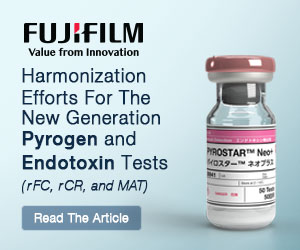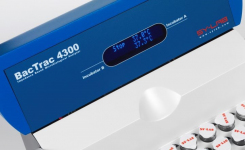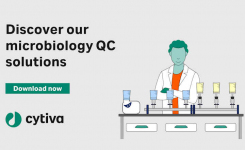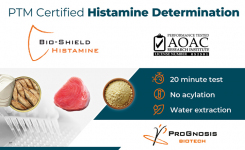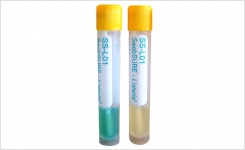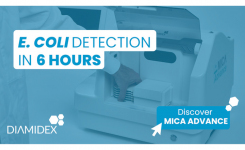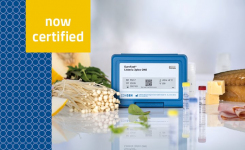All Options Covered with Lab M's C. sakazakii Media Range
go back to news archives| HAL012 Harlequin CSIM (ISO) showing C. sakazakii (blue-green colonies) | Commonly found in the environment and able to survive dessication, opportunistic pathogen Cronobacter sakazakii is known to pose a risk in the production of dried milk products. Since the organism is associated with sporadic cases and outbreaks of meningitis, necrotising enterocolitis and sepsis, especially in newborns, its reliable detection and monitoring crucial. In developing specific Harlequin™ chromogenic media, supported by a selective enrichment broth, Lab M provides the three key elements which ensure all current C. sakazakii testing protocols are covered: |
The chromogenic medium Harlequin™ CSIM (ISO) is designed for the isolation of C. sakazakii from milk and milk products. Alpha-glucosidase, expressed by C. sakazakii, hydrolyses the chromogenic substrate in the medium, producing green to blue-green colonies. Other Enterobacteriaceae appear colourless, or purple as a result of crystal violet uptake from the medium. The combination of sodium desoxycholate, crystal violet and an elevated incubation temperature ensure selectivity. Harlequin CSA-DFI also uses alpha-glucosidase activity to differentiate C. sakazakii strains from other members of the Enterobacteriaceae. The production of alpha-glucosidase by the pathogen results in hydrolysis of the chromogenic substrate and the formation of green colonies, with other Enterobacteriaceae appearing colourless. Hydrogen sulphide-producing organisms such as Salmonella and Proteus species appear grey, brown or black. C. sakazakii is associated with sporadic cases and outbreaks of meningitis, necrotising enterocolitis and sepsis, especially in newborns. To request a sample email info@labm.com. |
NOTE: This item is from our 'historic' database and
may contain information which is not up to date.
Source : Lab M View Company Information
Posted on September 24, 2010


